-
 Comprehensive Insights into Sarcopenia in Dialysis Patients: Mechanisms, Assessment, and Therapeutic Approaches
Comprehensive Insights into Sarcopenia in Dialysis Patients: Mechanisms, Assessment, and Therapeutic Approaches -
 The Role of Artificial Intelligence in Obesity Risk Prediction and Management: Approaches, Insights, and Recommendations
The Role of Artificial Intelligence in Obesity Risk Prediction and Management: Approaches, Insights, and Recommendations -
 Prognostic Differences Between Early-Onset and Late-Onset Colorectal Cancer
Prognostic Differences Between Early-Onset and Late-Onset Colorectal Cancer -
 Hypertension and Atrial Fibrillation: Bridging the Gap Between Mechanisms, Risk, and Therapy
Hypertension and Atrial Fibrillation: Bridging the Gap Between Mechanisms, Risk, and Therapy -
 Next-Generation Cognitive-Behavioral Therapy for Depression: Integrating Digital Tools, Teletherapy, and Personalization for Enhanced Mental Health Outcomes
Next-Generation Cognitive-Behavioral Therapy for Depression: Integrating Digital Tools, Teletherapy, and Personalization for Enhanced Mental Health Outcomes
Journal Description
Medicina
Medicina
is an international, peer-reviewed, open access journal that covers all problems related to medicine. The journal is owned by the Lithuanian University of Health Sciences (LUHS) and is published monthly online by MDPI. Partner organizations are the Lithuanian Medical Association, Vilnius University, Rīga Stradiņš University, the University of Latvia, and the University of Tartu.
- Open Access— free for readers, with article processing charges (APC) paid by authors or their institutions.
- High Visibility: indexed within Scopus, SCIE (Web of Science), PubMed, MEDLINE, PMC, and other databases.
- Journal Rank: JCR - Q1 (Medicine, General and Internal) / CiteScore - Q1 (General Medicine)
- Rapid Publication: manuscripts are peer-reviewed and a first decision is provided to authors approximately 17.1 days after submission; acceptance to publication is undertaken in 2.5 days (median values for papers published in this journal in the second half of 2024).
- Recognition of Reviewers: reviewers who provide timely, thorough peer-review reports receive vouchers entitling them to a discount on the APC of their next publication in any MDPI journal, in appreciation of the work done.
Impact Factor:
2.4 (2023);
5-Year Impact Factor:
2.7 (2023)
Latest Articles
Occlusion and Temporomandibular Disorders: A Scoping Review
Medicina 2025, 61(5), 791; https://doi.org/10.3390/medicina61050791 - 24 Apr 2025
Abstract
Background and Objectives: The occlusal–temporomandibular disorder (TMD) relation is a contentious issue in dentistry to date. This scoping review’s purpose was to map the existing literature on occlusal abnormalities and their potential role in the development and progression of TMD. Materials and
[...] Read more.
Background and Objectives: The occlusal–temporomandibular disorder (TMD) relation is a contentious issue in dentistry to date. This scoping review’s purpose was to map the existing literature on occlusal abnormalities and their potential role in the development and progression of TMD. Materials and Methods: A search in PubMed, Scopus, Cochrane Library, Embase, Lippincott, Medknow, and ClinicalKey was conducted. Articles researching the relationship between TMD and occlusion have been selected. A narrative data synthesis was conducted to chart and summarize the main findings from the included studies. Results: A total of 29 articles were included in this review. These studies confirm that angle class II and angle class III malocclusions, deep bite, and crossbite have a high prevalence of symptoms of TMD, including mandibular deviation, arthritic pain, and tenderness of the muscles. Malocclusion, edentulous spaces, and a reduced vertical dimension of occlusion (VDO) also contribute to the severity of TMD, most prominently in older adults. TMD is also seen with high prevalence in females, with a female-to-male ratio of 2:1 to 20:1, according to studies. Bruxism, premature occlusal contacts, and occlusal interferences also contribute towards symptoms of TMD, in agreement with multiple facets of the disorder. Conclusions: Occlusal abnormalities have a significant association with TMD, but causality cannot be established with most observational studies. This review emphasizes the need for early occlusal examination and intervention to reduce TMD risk.
Full article
(This article belongs to the Special Issue Current and Future Trends in Dentistry and Oral Health)
►
Show Figures
Open AccessReview
Rebound Pain After Regional Anaesthesia
by
Frances Fallon, Mohd Shazrul Ramly and Aneurin Moorthy
Medicina 2025, 61(5), 790; https://doi.org/10.3390/medicina61050790 - 24 Apr 2025
Abstract
The last decade of anaesthesia practice worldwide has seen considerable advancements in the field of regional anaesthesia with new equipment, techniques, and drug developments. With these advancements, regional anaesthesia practice has gained considerable momentum, and more patients benefit from it. Here, we review
[...] Read more.
The last decade of anaesthesia practice worldwide has seen considerable advancements in the field of regional anaesthesia with new equipment, techniques, and drug developments. With these advancements, regional anaesthesia practice has gained considerable momentum, and more patients benefit from it. Here, we review rebound pain after regional anaesthesia, a common yet poorly understood phenomenon that all regional anaesthesiologists should be familiar with in order to recognise, manage, and, where possible, prevent it.
Full article
(This article belongs to the Special Issue Recent Advances in Anesthesiology and Pain Medicine)
►▼
Show Figures
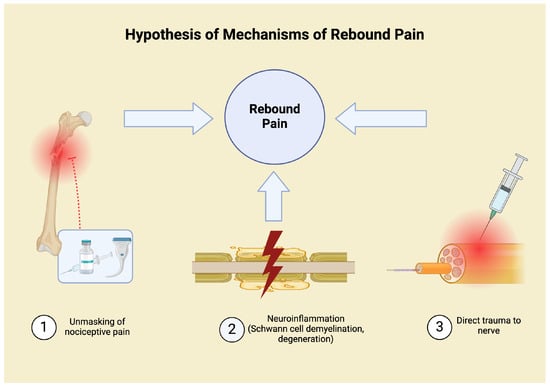
Figure 1
Open AccessArticle
Type 2 Diabetes Mellitus and Osteoporosis: Site-Specific Bone Mineral Density Variations and Metabolic Correlations in Postmenopausal Saudi Women
by
Nogood Mashahi Alhowiti, Amal M. H. Mackawy, Wanian Mohammed Al Wanian, Mohammad Alshebremi, Khaled S. Allemailem and Hajed Obaid Abdullah Alharbi
Medicina 2025, 61(5), 789; https://doi.org/10.3390/medicina61050789 - 24 Apr 2025
Abstract
Background and Objectives: Osteoporosis (OP) is a prevalent condition among postmenopausal women, with an estimated 40% of Saudi women affected. Concurrently, type 2 diabetes mellitus (T2DM) is highly prevalent in the Qassim region, affecting 45% of individuals aged 40 and older. Despite conflicting
[...] Read more.
Background and Objectives: Osteoporosis (OP) is a prevalent condition among postmenopausal women, with an estimated 40% of Saudi women affected. Concurrently, type 2 diabetes mellitus (T2DM) is highly prevalent in the Qassim region, affecting 45% of individuals aged 40 and older. Despite conflicting evidence regarding the impact of T2DM on bone health, its role in OP development remains uncertain. Materials and Methods: This study investigates site-specific bone mineral density (BMD) variations and their metabolic correlations in postmenopausal Saudi women with T2DM. A cross-sectional study included 250 postmenopausal Saudi women, 100 without diabetes (Group 1) and 150 with diabetes (Group 2), matched for age, menopausal duration, and body mass index (BMI). BMD at the femoral neck (FN) and lumbar spine (LS) was assessed using dual-energy X-ray absorptiometry (DXA). Biochemical markers, including parathyroid hormone (PTH), alkaline phosphatase (ALP), estrogen, calcium, and HbA1c, were assessed. Statistical analyses, including chi-square tests, t-tests, ANOVA, Pearson correlation, and multivariate regression, evaluated BMD variations and biochemical associations.Results:Patients with diabetes exhibited significantly higher FN T-scores than those without diabetes (p = 0.001), while LS T-scores showed no significant difference. BMD distribution (normal, osteopenia, OP) did not differ between the groups (p > 0.05). FN T-scores correlated positively with parathyroid hormone (PTH) and alkaline phosphatase (ALP) levels, reduced estrogen, and prolonged menopause duration (p < 0.01) but were inversely associated with estrogen levels and menopause duration (p < 0.01). Conclusions: No significant association was found between HbA1c and BMD. Additionally, BMI demonstrated a protective effect on FN BMD. T2DM appears to influence bone metabolism without directly causing OP in postmenopausal women. Aging, menopause duration, metabolic markers (PTH, ALP, estrogen), and BMI play crucial roles in BMD variations, with a protective effect of BMI. These findings underscore the importance of site-specific BMD assessment and metabolic profiling in postmenopausal women with diabetes. Further longitudinal research is needed to elucidate the underlying mechanisms affecting bone health in postmenopausal women with diabetes.
Full article
(This article belongs to the Section Endocrinology)
Open AccessArticle
Description of the Human Penile Urethra Epithelium
by
Matisse Duval, David Brownell, Stéphane Chabaud, Alexis Laungani, Eric Philippe and Stéphane Bolduc
Medicina 2025, 61(5), 788; https://doi.org/10.3390/medicina61050788 - 24 Apr 2025
Abstract
Background and Objectives: The male urethra is a complex structure that plays a critical role in genitourinary health and function. Despite its importance, histological descriptions of the penile urethra, particularly its epithelial components, remain incomplete. This study offers a comprehensive histological analysis
[...] Read more.
Background and Objectives: The male urethra is a complex structure that plays a critical role in genitourinary health and function. Despite its importance, histological descriptions of the penile urethra, particularly its epithelial components, remain incomplete. This study offers a comprehensive histological analysis of the penile urethra, focusing on the epithelium across distinct anatomical regions, including the glans, distal and proximal fossa navicularis and spongy urethra. Materials and Methods: Utilizing five human penile specimens, we employed various staining techniques to elucidate the structural characteristics of these epithelial tissues. Results: Our findings reveal notable variations in epithelial composition, such as the presence of glycogen-rich cells in the distal fossa navicularis and the presence of mucous glands in the spongy urethra and proximal fossa navicularis. Additionally, we identified a previously underreported valvule-like structure in the distal fossa navicularis in two of the specimens. In addition, the epithelium of the glans and the distal fossa navicularis are thicker than the ones of the proximal fossa navicularis and the spongy urethra. With a similar vascular density, the orientation of the blood vessels also diverges starting with the distal fossa navicularis. Conclusions: This study provides new insights into the histological organization of the penile urethra, offering critical reference data that can enhance our understanding of urethral pathologies and improve the outcomes of surgical interventions, particularly in the context of tissue engineering and reconstructive surgery.
Full article
(This article belongs to the Section Urology & Nephrology)
►▼
Show Figures
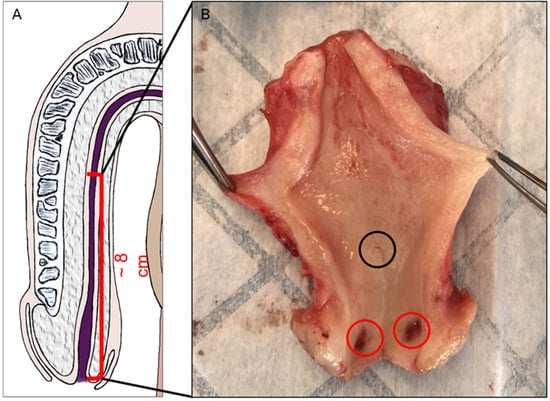
Figure 1
Open AccessArticle
Effect of Continuous Intraoperative Dexmedetomidine on Interleukin-6 and Other Inflammatory Markers After Coronary Artery Bypass Graft Surgery: A Randomized Controlled Trial
by
Ranko Zdravković, Sanja Vicković, Mihaela Preveden, Vanja Drobnjak, Mirka Lukić-Šarkanović, Iva Bosić Miljević, Milanka Tatić, Teodora Tubić, Nebojša Videnović, Nikola Mladenović, Nikola Komazec, Nina Dračina, Milica Jerković, Aleksandra Djoković, Aleksandar Jakovljević, Arijeta Kostić, Erdin Mehmedi and Aleksandar Redžek
Medicina 2025, 61(5), 787; https://doi.org/10.3390/medicina61050787 - 24 Apr 2025
Abstract
Background and Objectives: Coronary artery bypass graft (CABG) surgery is the most common cardiac surgery. One of the main causes of postoperative complications and increased mortality after CABG is the inflammatory response. The aim of this study was to investigate whether continuous intraoperative
[...] Read more.
Background and Objectives: Coronary artery bypass graft (CABG) surgery is the most common cardiac surgery. One of the main causes of postoperative complications and increased mortality after CABG is the inflammatory response. The aim of this study was to investigate whether continuous intraoperative dexmedetomidine can reduce the increase of IL-6 and other inflammatory markers after CABG surgery. Materials and Methods: The study is registered with ClinicalTrials.gov, NCT06378827, accessed on 23 April 2024. This prospective experimental study was conducted from April to December 2024 and included 100 patients undergoing CABG surgery. Patients in the experimental group (50 patients) received a continuous infusion of dexmedetomidine (0.5 μg/kg/h) from anesthesia induction until the end of surgery, while the patients in the control group (50 patients) received the same volume of saline. The primary outcomes were the changes in the values of interleukin-6 (IL-6), C-reactive protein (CRP), white blood cells (WBC), and fibrinogen on the first postoperative day (POD1) compared to the basal, preoperative values. Results: The patients in the control group were on average 65.26 years old, and the patients in the experimental group were 66.28 years old (p = 0.555). From the control group, 40 (80%) patients were male compared to 37 (74%) patients from the experimental group (p = 0.635). Median IL-6 before surgery was 2.0 pg/mL, while on POD 1 it was 76.2 pg/mL (p < 0.001). Median CRP before surgery was 2.5 mg/dL, while the POD1 value was 45.5 mg/dL (p < 0.001). Median WBC values were 6.7 × 109/L before surgery and 13.6 × 109/L on POD1 (p < 0.001). The average value of fibrinogen was 3.19 g/L before surgery, while on POD1 it was 3.37 g/L (p = 0.024). The increase in IL-6 on POD1 (ΔIL-6) was 72.4 pg/mL in the control group and 73.0 pg/mL in the experimental group (p = 0.427). ΔCRP was 41.2 mg/mL (control group) and 38.0 mg/mL (experimental group) (p = 0.725). ΔWBC was 7.45 × 109/L (control group) and 6.81 × 109/L (experimental group) (p = 0.407). Δfibrinogen was 0.16 g/L (control group) and 0.2 g/L (experimental group) (p = 0.771). Conclusions: Intraoperative administration of dexmedetodine during CABG surgery at a dose of 0.5 µg/kg/h without a loading dose does not lead to a decrease in the intensity of the inflammatory response after surgery.
Full article
(This article belongs to the Section Cardiology)
►▼
Show Figures

Figure 1
Open AccessArticle
Feasibility and Safety Properties of Metabolic-Flow Anesthesia Driven by Automated Gas Control® in Pediatric Patients: A Prospective Observational Study
by
Emre Sertaç Bingül, Meltem Savran Karadeniz, Emre Şentürk, İrem Vuran Yaz, Ayşe Gülşah Atasever and Mukadder Orhan Sungur
Medicina 2025, 61(5), 786; https://doi.org/10.3390/medicina61050786 - 24 Apr 2025
Abstract
Background and Objectives: Metabolic-flow (<0.35 L/min) anesthesia is practiced more often as manufacturers provide newer technologies, yet the benefits of metabolic-flow anesthesia have not been fully investigated. This study aimed to investigate the feasibility and safety of automated gas control (AGC®
[...] Read more.
Background and Objectives: Metabolic-flow (<0.35 L/min) anesthesia is practiced more often as manufacturers provide newer technologies, yet the benefits of metabolic-flow anesthesia have not been fully investigated. This study aimed to investigate the feasibility and safety of automated gas control (AGC®) mode, which provides metabolic-flow anesthesia, in a pediatric population. Materials and Methods: Pediatric surgery patients between 1 and 10 years of age were included in this prospective observational trial. After intravenous induction and safe orotracheal intubation, AGC® was initiated, and total sevoflurane consumption (mL) and wash-in speed-based sevoflurane consumption data were collected to measure feasibility. For safety, inspired (FiO2), alveolar (FAO2), and expired (FEO2) oxygen concentration data, and inspired and alveolar sevoflurane (FiSevo and FASevo, respectively) concentration data, were recorded. Changes in fresh gas flow (FGF) throughout the procedure and postoperative recovery data were also compared. Results: A total of 130 patients were eligible for this study, and 121 patients were included in the analyses; 30 patients had a wash-in speed of 4 (WI4) and 91 patients had a wash-in speed of 8 (WI8) at follow-up. The total mean sevoflurane consumption was 9.35 ± 4.93 mL for a median surgery duration of 100 min. WI8 patients consumed more sevoflurane (9.92 ± 5.08 mL vs. 7.79 ± 4.19 mL, p = 0.04). At the 15th and 30th minutes, the FGF dropped under minimal flow and metabolic flow limits, respectively (p < 0.001). The times to extubation and obeying commands were shorter in WI8 patients (8 (5–10) vs. 11 (5–15) p = 0.03, and 9.5 (5–10.5) vs. 13 (9–17) p < 0.01). Conclusions: Maintenance with AGC® may offer up to 40 h of anesthesia, considering that the volume of a sevoflurane bottle is 250 mL, reflecting exceptional savings compared to conventional anesthesia management. Metabolic flow anesthesia driven by AGC® is feasible and safe in pediatric anesthesia practice.
Full article
(This article belongs to the Section Intensive Care/ Anesthesiology)
►▼
Show Figures
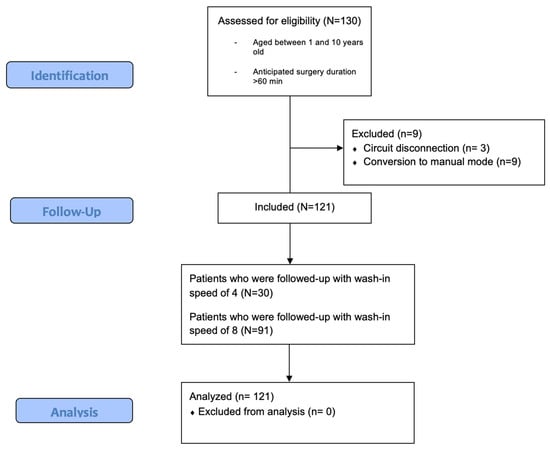
Figure 1
Open AccessArticle
Association of Systemic Inflammatory Response Index and Prognostic Nutritional Index Scores with Sarcopenia in Patients with Metastatic Gastric Cancer
by
Busra Kanbur, Ilkay Tugba Unek, Mehmet Uzun, Caner Ozturk, Raif Can Yarol and Ali Balci
Medicina 2025, 61(5), 785; https://doi.org/10.3390/medicina61050785 - 23 Apr 2025
Abstract
Background and Objectives: Sarcopenia is frequently observed in cancer patients and is associated with short survival. In this study, the aim was to research the sarcopenia risk factors, the correlation of sarcopenia with inflammatory biomarkers, and the prognostic significance of sarcopenia and inflammation
[...] Read more.
Background and Objectives: Sarcopenia is frequently observed in cancer patients and is associated with short survival. In this study, the aim was to research the sarcopenia risk factors, the correlation of sarcopenia with inflammatory biomarkers, and the prognostic significance of sarcopenia and inflammation markers in patients with metastatic gastric cancer. Material and Method: The study included 177 patients diagnosed with metastatic gastric cancer attending Dokuz Eylül University Faculty of Medicine (DEUFM) Medical Oncology clinic from 2016 to 2022. The skeletal muscle area at L3 vertebral level was identified on abdominal computed tomography (CT) images, and the skeletal muscle index (SMI, cm2/m2) was calculated. Additionally, PLR, MLR, NLR, dNLR, SIRI, SII, PIV, PNI, CAR, and LAR were assessed among systemic inflammatory biomarkers. Cut-off values were determined with ROC curve analysis. Survival analyses were performed with the Kaplan–Meier method, and risk factors were investigated with Cox regression analysis. For all statistical analyses, p < 0.05 was accepted as significant. Results: Among patients, 71.8% were identified to have sarcopenia. Significant levels of difference were identified for median SIRI, NLR, MLR, PLR, SII, PNI, and dNLR values between patients with and without sarcopenia (p < 0.05). The sarcopenia risk was assessed between groups created according to the cut-off values for inflammation markers. Univariate regression analysis found that SIRI, PIV, NLR, MLR, PLR, SII, PNI, and dNLR were statistically significant (p < 0.05). Multivariate analysis identified SIRI and PNI as independent risk factors. For all patients, median overall survival was identified to be 12.4 ± 0.8 months (CI 95%, 10.8–13.9). For patients with sarcopenia, overall survival duration was 11.5 ± 0.8 months, while survival duration for patients without sarcopenia was 17.5 ± 4.6 months (p = 0.010). Elevation in the inflammatory biomarkers of SIRI, NLR, SII, LAR, and CAR and low PNI values appear to be associated with short survival (p < 0.05). Conclusions: In this study, sarcopenia was frequently observed in patients with metastatic gastric cancer and sarcopenia was associated with shorter survival. A significant correlation was observed between sarcopenia and inflammatory biomarkers, with SIRI and PNI identified to be independent risk factors for sarcopenia. Our study emphasizes the prognostic importance of sarcopenia and inflammatory markers for the management of patients with metastatic gastric cancer.
Full article
(This article belongs to the Section Oncology)
►▼
Show Figures
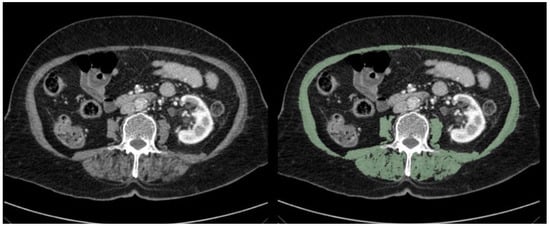
Figure 1
Open AccessArticle
Redefining Trauma Triage for Elderly Adults: Development of Age-Specific Guidelines for Improved Patient Outcomes Based on a Machine-Learning Algorithm
by
Ji Yeon Lim, Yongho Jee, Seong Gyu Choi, Yoon Hee Choi, Sam S. Torbati, Carl T. Berdahl and Sun Hwa Lee
Medicina 2025, 61(5), 784; https://doi.org/10.3390/medicina61050784 - 23 Apr 2025
Abstract
Background and Objectives: Elderly trauma patients face unique physiological challenges that often lead to undertriage under the current guidelines. The present study aimed to develop machine-learning (ML)-based, age-specific triage guidelines to improve predictions for intensive care unit (ICU) admissions and in-hospital mortality.
[...] Read more.
Background and Objectives: Elderly trauma patients face unique physiological challenges that often lead to undertriage under the current guidelines. The present study aimed to develop machine-learning (ML)-based, age-specific triage guidelines to improve predictions for intensive care unit (ICU) admissions and in-hospital mortality. Materials and Methods: A total of 274,347 trauma cases transported via Emergency Medical System (EMS)-119 in Seoul (2020–2022) were analyzed. Physiological indicators (e.g., systolic blood pressure; saturation of partial pressure oxygen; and alert, verbal, pain, unresponsiveness scale) were incorporated. Bayesian optimization was used to fine-tuned models for sensitivity and specificity, emphasizing the F2 score to minimize undertriage. Results: Compared with the current guidelines, the alternative guidelines achieved superior sensitivity for ICU admissions (0.728 vs. 0.541) and in-hospital mortality (0.815 vs. 0.599). Subgroup analyses across injury severities, including traumatic brain and chest injuries, confirmed the enhanced performance of the alternative guidelines. Conclusions: ML-based, age-specific triage guidelines improve the sensitivity of triage decisions, reduce undertriage, and optimize elderly trauma care. Implementing these guidelines can significantly enhance patient outcomes and resource allocation in emergency settings.
Full article
(This article belongs to the Section Intensive Care/ Anesthesiology)
►▼
Show Figures

Figure 1
Open AccessArticle
Comparison of the Effects of Propofol–Dexmedetomidine and Thiopental–Dexmedetomidine Combinations on the Success of Classical Laryngeal Mask Airway Insertions, Hemodynamic Responses, and Pharyngolaryngeal Morbidity
by
Mensure Çakırgöz, İsmail Demirel, Aysun Afife Kar, Ergin Alaygut, Ömürhan Saraç, Emre Karagöz, Oğuzhan Demirel and Mert Akan
Medicina 2025, 61(5), 783; https://doi.org/10.3390/medicina61050783 - 23 Apr 2025
Abstract
Background and Objectives: Dexmedetomidine is a potent selective α2 receptor agonist with analgesic and sedative effects. Many reports indicate that compared to fentanyl, the combination of dexmedetomidine with propofol provides comparably acceptable conditions for a laryngeal mask airway (LMA). However, no
[...] Read more.
Background and Objectives: Dexmedetomidine is a potent selective α2 receptor agonist with analgesic and sedative effects. Many reports indicate that compared to fentanyl, the combination of dexmedetomidine with propofol provides comparably acceptable conditions for a laryngeal mask airway (LMA). However, no study has evaluated the effectiveness of combined dexmedetomidine and thiopental in LMA insertions compared to that of combined dexmedetomidine and propofol. This prospective, randomized, double-blind study aimed to compare the effects of dexmedetomidine with thiopental or propofol on LMA insertion conditions, hemodynamic responses, and pharyngolaryngeal morbidity, which in this study was defined as the presence of postoperative sore throat, dysphagia, or visible blood in the airway following a laryngeal mask airway (LMA) insertion. Materials and Methods: A total of 80 premedicated ASA I-II patients aged 18–65 years were randomized to the propofol group (Group P, n = 40) or thiopental group (Group T, n = 40). Anesthesia was induced by infusing 1 μg·kg−1 dexmedetomidine over 10 min followed by 2.5 mg·kg−1 propofol or 5 mg·kg−1 thiopental. LMA insertion conditions were evaluated on a scale assessing six variables. Systolic arterial pressure (SAP), diastolic arterial pressure (DAP), mean arterial pressure (MAP), heart rate (HR), and bispectral index values were recorded at baseline; 1 min before; and at 1, 2, 3, 4, and 5 min after an LMA insertion. The baseline values for the systolic arterial pressure (SAP), diastolic arterial pressure (DAP), mean arterial pressure (MAP), heart rate (HR), and bispectral index (BIS) values were recorded before dexmedetomidine infusion. Measurements for all patients were then taken 1 min before and at 1, 2, 3, 4, and 5 min after the LMA insertion Results: Demographic data were similar between the groups. In Group P, the time to loss of eyelash reflex and LMA insertion time were significantly shorter, the apnea duration was significantly longer, and the rates of full jaw opening and optimal LMA insertion conditions were significantly higher when compared with those of Group T (p < 0.05). Group P showed a significantly greater percentage decrease in HR compared to that of Group T at 1 min before and 1, 2, and 3 min after the LMA insertion (p < 0.05). Group T had a greater decrease in SAP and MAP at 1 min before insertion, while the SAP decrease was lower in Group T at 3, 4, and 5 min after insertion. The MAP and DAP values after the LMA insertion showed a greater decrease in Group P compared to in Group T (p < 0.05). The incidence of bradycardia was significantly (p < 0.05) higher in Group P than in Group T. There was no significant difference between the groups in terms of the frequency of hypotension, sore throat, presence of blood, or dysphagia at discharge from the recovery unit (p > 0.05). Conclusions: This study showed that the use of dexmedetomidine with thiopental provided comparably acceptable LMA insertion conditions with more stable hemodynamics compared to propofol.
Full article
(This article belongs to the Special Issue Airway Management and Anesthetic Care)
Open AccessArticle
Dynamic Cycle of Low Back Pain: A 17-Year, Population-Based Study Analyzing the National Health Insurance Service Data in South Korea
by
Mi-Ran Goo, Deok-Hoon Jun and Do-Youn Lee
Medicina 2025, 61(5), 782; https://doi.org/10.3390/medicina61050782 - 23 Apr 2025
Abstract
Background and Objectives: Low back pain (LBP) is a highly prevalent musculoskeletal condition that frequently recurs, leading to increased healthcare utilization and socioeconomic burden. While short-term management strategies are well-documented, long-term recurrence patterns remain insufficiently studied. This study aims to describe the
[...] Read more.
Background and Objectives: Low back pain (LBP) is a highly prevalent musculoskeletal condition that frequently recurs, leading to increased healthcare utilization and socioeconomic burden. While short-term management strategies are well-documented, long-term recurrence patterns remain insufficiently studied. This study aims to describe the long-term recurrence patterns and healthcare utilization associated with LBP in a nationwide cohort over a 17-year period. Materials and Methods: This descriptive, retrospective longitudinal cohort study utilized data from the Korean National Health Insurance Service (NHIS) database (2002–2018). We included 3,086,665 patients who sought medical care for LBP (ICD-10 code M54.5) at least once in 2010. Patients with a history of disability rating assessments were excluded. The primary outcomes included the number of LBP episodes, episode duration, recurrence patterns, and changes in healthcare utilization. We assessed the number of healthcare visits per episode and the interval between episodes over time. Results: Among the study population, 79.4% experienced recurrent LBP, with an average of 5.0 ± 4.9 episodes per patient. Recurrence rates increased with each episode. In addition, episode duration lengthened, and intervals between episodes shortened. Healthcare utilization also increased, with patients requiring more visits per episode over time. The demographic and socioeconomic characteristics of the LBP patients in our sample were also described. Conclusions: In this population-based sample, LBP follows a progressive course, with increasing episode frequency, prolonged duration, and escalating healthcare utilization over time. These findings highlight the need for early intensive management and long-term follow-up strategies to mitigate the growing burden of recurrent LBP on individuals and healthcare systems.
Full article
(This article belongs to the Special Issue Advances in Rheumatic and Musculoskeletal Diseases and Health Promotion)
►▼
Show Figures
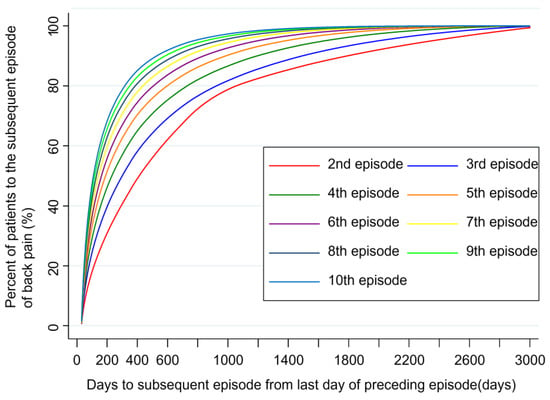
Figure 1
Open AccessArticle
Evaluation of the Relationship Between Clinical Frailty Scale (CFS) and Mortality in Geriatric Patients with Pneumonia Diagnosed in Intensive Care
by
Guler Eraslan Doganay, Melek Doganci, Mustafa Ozgur Cirik, Tarkan Ozdemir, Murat Yıldız, Mehtap Tunc, Maside Arı, Fatma Ozturk Yalcin, Derya Hosgun, Banu Çakıroglu, Oral Mentes and Azra Ozabarci
Medicina 2025, 61(5), 781; https://doi.org/10.3390/medicina61050781 - 23 Apr 2025
Abstract
Background and Objectives: Frailty can represent the transitional stage between successful aging and old age in need of care; it is a guide for setting goals for regaining robust old age in the individual at risk. Frailty is associated with longer intensive
[...] Read more.
Background and Objectives: Frailty can represent the transitional stage between successful aging and old age in need of care; it is a guide for setting goals for regaining robust old age in the individual at risk. Frailty is associated with longer intensive care unit duration, hospital stay, and higher mortality. The aim of this study was to evaluate the relationship between mortality and frailty in geriatric patients (65 years and older) admitted to the intensive care unit with a diagnosis of pneumonia. Materials and Methods: In total, 478 patients were included in the study. The demographic data, such as age, gender, body mass index (BMI), Charlson comorbidity index (CCI), Clinical Frailty Scale (CFS), acute physiology and chronic health evaluation (APACHE II) scores, sequential organ failure assessment score (SOFA), invasive/noninvasive mechanical ventilator days, length of stay in the hospital and intensive care unit, inotropic requirement, and 28-day mortality, were retrospectively scanned and recorded. Results: Advanced age, lower BMI, higher Charlson Comorbidity index (CCI), SOFA score, and CFS increased 28-day mortality. CFS was found to be associated with 28-day mortality similar to the use of inotropic agents, prolonged MV duration, and ICU length of stay (LOS). Conclusions: CFS is effective in predicting 28-day mortality in geriatric patients diagnosed with pneumonia in intensive care. It also provides insights into morbidity parameters such as requirement for inotropic agents, duration of mechanical ventilation (MV), and LOS ICU.
Full article
(This article belongs to the Section Pulmonology)
►▼
Show Figures
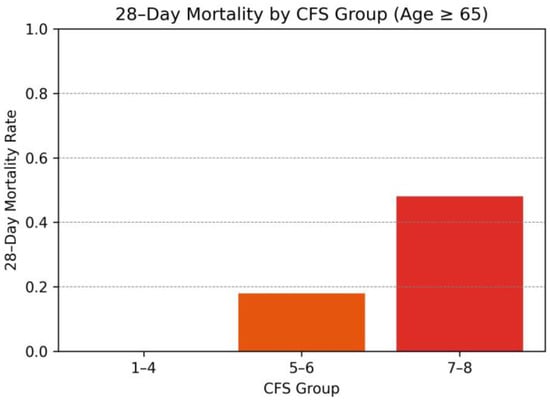
Figure 1
Open AccessArticle
Can We Reduce the Diagnostic Burden of Sleep Disorders? A Single-Centre Study of Subjective and Objective Sleep-Related Diagnostic Parameters
by
Tadas Vanagas, Domantė Lipskytė, Jovita Tamošiūnaitė, Kęstutis Petrikonis and Evelina Pajėdienė
Medicina 2025, 61(5), 780; https://doi.org/10.3390/medicina61050780 - 23 Apr 2025
Abstract
Background and Objectives: Sleep disorders are highly prevalent in society and require focused attention within healthcare systems. While patient history, reported complaints, and subjective sleep questionnaires can provide initial insights into potential sleep issues, polysomnography (PSG) remains the gold standard for diagnosing various
[...] Read more.
Background and Objectives: Sleep disorders are highly prevalent in society and require focused attention within healthcare systems. While patient history, reported complaints, and subjective sleep questionnaires can provide initial insights into potential sleep issues, polysomnography (PSG) remains the gold standard for diagnosing various sleep disorders. However, long waiting times for PSG appointments in many healthcare facilities pose challenges for timely diagnosis and treatment. This study aimed to evaluate the diagnostic value of subjective measures, including patient-reported parameters, in comparison to the objective findings of PSG. Materials and Methods: In this study, we retrospectively analysed the data from 562 patients who underwent clinical evaluation and PSG testing at the Hospital of Lithuanian University of Health Sciences Kaunas Clinics between 2018 and 2024. We report the diagnostic accuracy of different sleep questionnaires to detect various sleep disorders in our population. Results: We report the corresponding sensitivity and specificity values: the Epworth Sleepiness Scale (ESS)—73.2% and 44.1% for detecting severe obstructive sleep apnoea and 87.1% and 76.8% for detecting hypersomnia; the Insomnia Severity Index (ISI)—77.2% and 63.3% for detecting insomnia; the Berlin Questionnaire (BQ)—67.8% and 68.8% for detecting obstructive sleep apnoea; the Ullanlina Narcolepsy Scale (UNS)—84.4% and 58.9% for detecting hypersomnia; the Innsbruck REM Sleep Behaviour Disorder Inventory (RBD-I)—93.3% and 52.5% for detecting RBD; the REM Sleep Behaviour Disorder Single-Question Screen (RBD1Q)—73.3% and 81.0% for detecting RBD; and the Paris Arousal Disorder Severity Scale (PADSS)—57.5% and 90.5% for detecting parasomnia. Conclusions: When comparing our findings with the previous literature, we found that the screening tools generally demonstrated a slightly poorer performance in our population. However, our results suggest that certain individual questions from the comprehensive questionnaires may provide comparable diagnostic values, while reducing the patient burden. We propose a targeted screening approach that integrates fundamental clinical parameters, key screening questions, and selected validated questionnaires, enabling primary care and outpatient clinicians to more efficiently identify patients who may require referral for specialised sleep evaluation and treatment.
Full article
(This article belongs to the Special Issue Epilepsy, Seizures, and Sleep Disorders)
►▼
Show Figures

Figure 1
Open AccessArticle
Relationship Between Coronary Collateral Circulation and the Neutrophil-Percentage-to-Albumin Ratio in Patients with Chronic Coronary Syndrome
by
Zeki Cetinkaya, Yucel Yilmaz, Oguzhan Baran, Ozlem Secen, Mehmet Ali Gelen, Seyda Sahin, Ozkan Yavcin, Muhammed Ekmekyapar, Erkan Yıldırım and Saban Kelesoglu
Medicina 2025, 61(5), 779; https://doi.org/10.3390/medicina61050779 - 23 Apr 2025
Abstract
Background and Objectives: The neutrophil-percentage-to-albumin ratio (NPAR) has been recognized as an independent risk factor for cardiovascular diseases. In our study, we investigated whether the NPAR is associated with the formation of coronary collateral circulation (CCC) in patients with chronic coronary syndrome (CCS).
[...] Read more.
Background and Objectives: The neutrophil-percentage-to-albumin ratio (NPAR) has been recognized as an independent risk factor for cardiovascular diseases. In our study, we investigated whether the NPAR is associated with the formation of coronary collateral circulation (CCC) in patients with chronic coronary syndrome (CCS). Materials and Methods: A total of 681 patients with CCS were included in this study. Of these patients, 571 had chronic total occlusion in at least one major vessel and developed collateral vessels. In total, 110 patients were in the control group, who had CCS but did not have complete occlusion in a major vessel and did not develop collateral vessels. Patients with collateral vessels on coronary angiography were divided into two groups according to the Rentrop score: poor CCC (Rentrop 0–1) and good CCC (Rentrop 2–3). Blood samples were taken for the NPAR and other biochemical parameters in all patients during hospitalization. The NPAR was calculated as the neutrophil-percentage-to-albumin ratio. Results: The group of patients with poor CCC had a higher white blood count (WBC), neutrophil, C-reactive protein (CRP), neutrophil–lymphocyte ratio (NLR), CRP/albumin ratio (CAR), and NPAR values than patients with good CCC (p < 0.001, for all). Multivariate logistic regression analysis showed that high NPAR levels were an independent predictor of poor CCC (OR: 2.79, 95% CI:1.7–4.6, p < 0.001), accompanied by neutrophil, CRP, CAR, and NLR levels. In the receiver operator characteristic curve (ROC analysis), the cut-off value for the NPAR to indicate poor CCC was 1.78 with a sensitivity of 76.6% and specificity of 81.4% (area under ROC curve = 0.804 95% CI (0.753–0.854), p < 0.001). Conclusions: We demonstrated that the NPAR may be an independent predictor of poor CCC development in clinical practice.
Full article
(This article belongs to the Special Issue Advances in Chronic Coronary Syndrome and Coronary Heart Disease)
►▼
Show Figures

Figure 1
Open AccessArticle
Oxidative Stress in Postoperative Atrial Fibrillation: Does Malondialdehyde Hold Predictive Value?
by
Urska Intihar, Arta Krasniqi, Anze Djordjevic, Jan Zmazek, Harun Avdagic, Jus Ksela and Miha Antonic
Medicina 2025, 61(5), 778; https://doi.org/10.3390/medicina61050778 - 22 Apr 2025
Abstract
Background and Objectives: Postoperative atrial fibrillation (POAF) is a common complication following cardiac surgery, associated with increased morbidity and prolonged hospital stays. Oxidative stress has been implicated in POAF pathogenesis, with malondialdehyde (MDA), a marker of lipid peroxidation, proposed as a potential
[...] Read more.
Background and Objectives: Postoperative atrial fibrillation (POAF) is a common complication following cardiac surgery, associated with increased morbidity and prolonged hospital stays. Oxidative stress has been implicated in POAF pathogenesis, with malondialdehyde (MDA), a marker of lipid peroxidation, proposed as a potential biomarker. However, conflicting evidence exists regarding its predictive value. This study aimed to assess the association between serum MDA levels and POAF incidence in patients undergoing cardiac surgery. Materials and Methods: This prospective observational study included 99 consecutive patients undergoing elective on-pump cardiac surgery. Patients with preoperative atrial fibrillation, chronic kidney disease requiring dialysis, or emergency surgery were excluded. Blood samples for MDA measurement were collected at six perioperative time points: preoperatively, intraoperatively after aortic clamp release, and at 8, 24, 48, and 72 h postoperatively. Patients were monitored for new-onset POAF during the first three postoperative days. Statistical analyses included independent samples t-tests, Mann–Whitney U-tests, and Fisher’s exact tests, with significance set at p < 0.05. Results: POAF occurred in 33 (33%) patients. Patients who developed POAF were significantly older (p = 0.017) and had higher EuroSCORE II values (p = 0.019). No significant differences were observed in serum MDA concentrations between POAF and non-POAF patients at any measured time point. The incidence of POAF was higher in patients undergoing valvular surgery (p = 0.014). Conclusions: Serum MDA levels were not associated with POAF development, suggesting that lipid peroxidation alone may not play a central role in POAF pathogenesis. These findings challenge the predictive value of MDA for POAF risk stratification. Future research should explore alternative oxidative stress markers and their potential therapeutic implications in POAF prevention.
Full article
(This article belongs to the Special Issue Advancements in Cardiovascular Medicine and Interventional Radiology)
Open AccessArticle
Inflammatory Indices and CA 125: A New Approach to Distinguish Ovarian Carcinoma and Borderline Tumors in Suspicious Ovarian Neoplasms from a Retrospective Observational Multicentric Study
by
Carlo Ronsini, Stefano Restaino, Giuseppe Vizzielli, Mariano Catello Di Donna, Giuseppe Cucinella, Maria Cristina Solazzo, Cono Scaffa, Pasquale De Franciscis and Vito Chiantera
Medicina 2025, 61(5), 777; https://doi.org/10.3390/medicina61050777 - 22 Apr 2025
Abstract
Background and Objectives: This study aimed to evaluate the diagnostic potential of systemic inflammatory indices such as Systemic Inflammation Response Index (SIRI) and Systemic Inflammatory Response (SIR). These were assessed in combination with CA 125 to distinguish ovarian carcinoma (OC) from borderline
[...] Read more.
Background and Objectives: This study aimed to evaluate the diagnostic potential of systemic inflammatory indices such as Systemic Inflammation Response Index (SIRI) and Systemic Inflammatory Response (SIR). These were assessed in combination with CA 125 to distinguish ovarian carcinoma (OC) from borderline ovarian tumors (BOT) in patients with suspicious adnexal masses. Materials and Methods: A retrospective multicenter observational study including patients undergoing surgery for suspected ovarian neoplasms was conducted. Inclusion criteria required preoperative blood sampling for inflammatory markers and CA 125. SIR-125 and SIRI-125 were developed by combining SIR and SIRI with CA 125 levels. Diagnostic performance was assessed using ROC curve analysis and linear regression models. Results: A total of 63 patients (42 BOT, 21 OC) were analyzed. OC patients exhibited significantly higher SIR-125 and SIRI-125 values (p < 0.001). ROC analysis demonstrated good diagnostic accuracy, with AUCs of 0.83 (SIR-125) and 0.82 (SIRI-125). SIR-125 showed higher specificity (0.83), while SIRI-125 had superior sensitivity (0.86). Conclusions: SIR-125 and SIRI-125 enhance diagnostic differentiation between OC and BOT, providing a simple, cost-effective preoperative tool. Future prospective studies are needed to validate these findings in broader patient populations.
Full article
(This article belongs to the Special Issue Latest Findings in Diagnosis and Treatment of Gynecological Malignancies—2nd Edition)
►▼
Show Figures
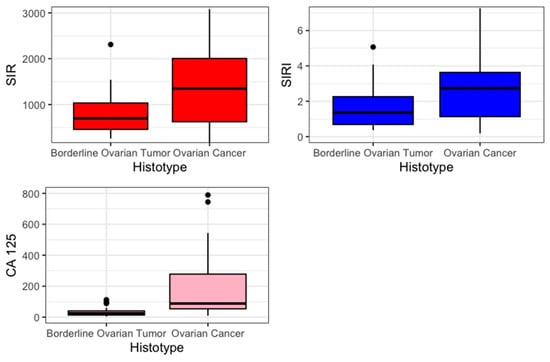
Figure 1
Open AccessArticle
Long-Term Outcomes of Patients Undergoing Conversion Surgery After Induction Chemotherapy: Turkish Oncology Group Study
by
Furkan Ceylan, Selin Aktürk Esen, Olçun Ümit Ünal, Ferit Aslan, İlknur Deliktaş Onur, Öztürk Ateş, Erkut Demirciler, İlkay Tuğba Ünek, Ahmet Gülmez, Esra Özen Engin, Semra Taş, Gamze Gököz Doğu, Melih Şimşek, Hacı Mehmet Türk, Ali İnal, Gökhan Şahin, Haydar Çağatay Yüksel, Ateş Kutay Tenekeci, Mutlu Hızal, Mehmet Ali Nahit Şendur and Doğan Uncuadd
Show full author list
remove
Hide full author list
Medicina 2025, 61(5), 776; https://doi.org/10.3390/medicina61050776 - 22 Apr 2025
Abstract
Background and Objectives: Conversion surgery for liver metastatic colorectal cancer (mCRC) has been associated with prolonged survival. This study aimed to evaluate the efficacy and safety of integrating biological therapies with fluorouracil-based induction chemotherapy in patients with isolated liver mCRC who subsequently
[...] Read more.
Background and Objectives: Conversion surgery for liver metastatic colorectal cancer (mCRC) has been associated with prolonged survival. This study aimed to evaluate the efficacy and safety of integrating biological therapies with fluorouracil-based induction chemotherapy in patients with isolated liver mCRC who subsequently underwent curative resection of both the primary tumor and liver metastases. Materials and Methods: This multicenter, retrospective study, conducted by the Turkish Oncology Group (TOG), included 116 patients from 11 tertiary centers who underwent conversion surgery following induction chemotherapy between 2009 and 2024. Results: The median age was 57 years, with 62% male patients. The median follow-up period was 55.3 months. The median progression-free survival (PFS) and overall survival (OS) were 21.1 and 53.7 months, respectively. No significant differences in PFS or OS were observed based on biological therapy use or tumor localization. Among patients with RAS/RAF wild-type tumors, PFS and OS were comparable between those receiving Anti-EGFR and Anti-VEGF therapy. In RAS/RAF mutant tumors, the addition of Anti-VEGF therapy did not confer a survival benefit. Factors associated with shorter PFS included advanced tumor stage (ypT3-T4), lymph node metastasis, and multiple metastases, while shorter OS was linked to advanced tumor stage and lack of objective response. Conclusions: Surgical resection plays a pivotal role in improving survival outcomes in patients with potentially resectable liver mCRC. Optimizing induction chemotherapy regimens may enhance conversion rates and prolong long-term survival. Further studies are needed to refine treatment selection based on tumor localization, mutation status, and molecular biomarkers.
Full article
(This article belongs to the Section Oncology)
►▼
Show Figures
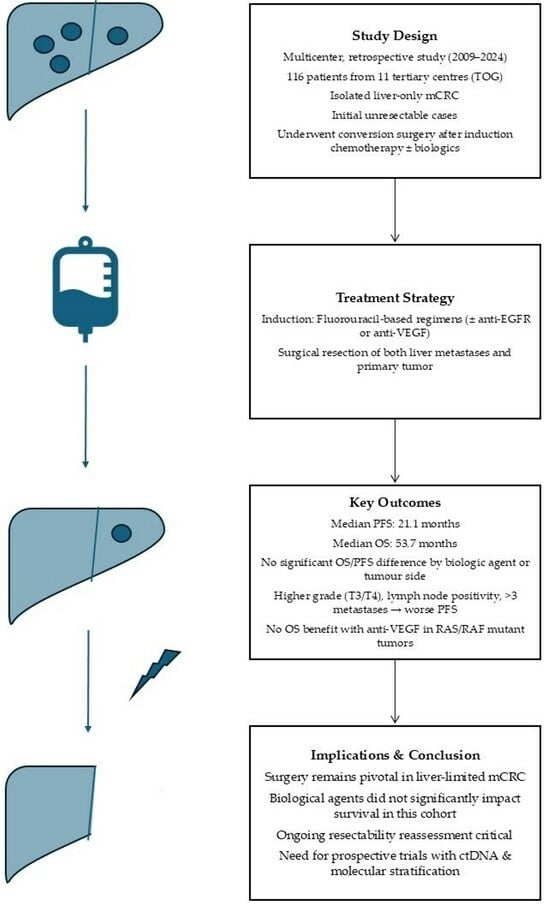
Graphical abstract
Open AccessArticle
Anatomical Variables of the Superior Thyroid Artery on Computed Tomography Angiograms
by
Rodica Narcisa Calotă, Mugurel Constantin Rusu, Marius Ioan Rusu, Cătălin Constantin Dumitru and Alexandra Diana Vrapciu
Medicina 2025, 61(5), 775; https://doi.org/10.3390/medicina61050775 - 22 Apr 2025
Abstract
Background and Objectives: The superior thyroid artery (STA) typically has its origin inferiorly to the greater hyoid horn (GHHB) either from the external carotid artery (ECA) or from the carotid bifurcation (CB) or the common carotid artery (CCA). We aimed to determine
[...] Read more.
Background and Objectives: The superior thyroid artery (STA) typically has its origin inferiorly to the greater hyoid horn (GHHB) either from the external carotid artery (ECA) or from the carotid bifurcation (CB) or the common carotid artery (CCA). We aimed to determine the topographic variants of the STA related to the GHHB and the artery of origin and to check their bilateral symmetry. Materials and Methods: Determinations were performed in a sample of 85 archived angio CT adult cases, comprising 53 men and 32 women. The origins of the STAs from the CCA/CB/ECA were classified as types A–C. We defined the vertical topographies of the STA as follows in relation to the GHHB: type 1 (infrahyoid), type 2 (hyoid), and type 3 (suprahyoid). Subtypes of the STA course were added: “a”, lateral to the GHHB; “b”, medial; and “c”, posterior to it. Unilateral combinations of types and bilateral associations of these were established. Results: In 170 carotid axes, we detected STA type A in 8.82%, type B in 28.82%, and type C in 60% of cases. It was absent in 2.35% of the cases. The infrahyoid type 1 of STA was found in 47.06% of cases. The hyoid type 2 was found in 20.59% (2a), 0.59% (2b), and 4.71% (2c). The suprahyoid type 3 was found in 21.18% (3a), 0% (3b), and 3.53% (3c). Thirteen unilateral combinations of types were found. The most prevalent ones were C1 (27.71%), C3a (17.47%), and B1 (15.66%). We established thirty-seven bilateral associations of unilateral combinations of types. The cases with asymmetrical bilateral associations of unilateral combinations of types prevailed. A lowered hyoid bone overlapping the thyroid cartilage was found in one of these cases. The prevailing associations were C1-C1 (bilateral infrahyoid origin of the STA from the ECA, 13/85, 15.29%), C3a-C3a (suprahyoid origins of the STAs from the ECAs and lateral courses over the GHHB, 9/85, 10.58%) and C1-B1 (infrahyoid origins from the ECA and CB, 8/85, 9.41%). Conclusions: The vertical topography of the STA is highly variable and hardly predictable but can be examined in imaging studies. The GHHB may be of use to identify and manage the artery. The STA is rarely absent.
Full article
(This article belongs to the Section Endocrinology)
►▼
Show Figures
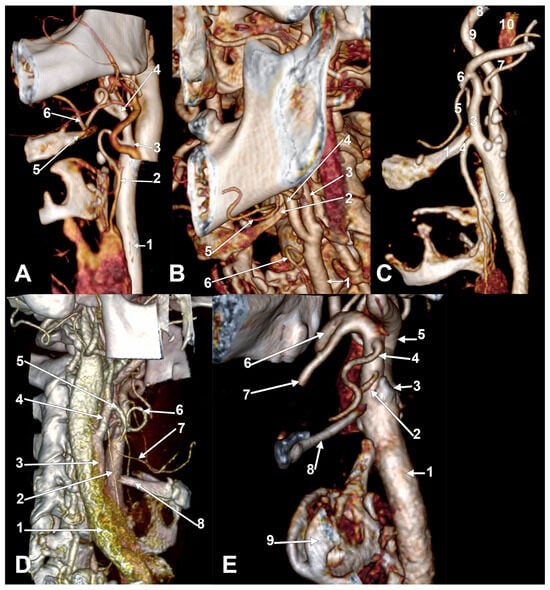
Figure 1
Open AccessArticle
The Influence of an Eight-Week Home Exercise Program on Spatiotemporal and Kinetic Characteristics of Gait and Knee Function in Women with Severe Knee Osteoarthritis Scheduled for Arthroplasty
by
Monika Mets, Jelena Sokk, Jaan Ereline, Mati Pääsuke, Tiit Haviko and Helena Gapeyeva
Medicina 2025, 61(5), 774; https://doi.org/10.3390/medicina61050774 - 22 Apr 2025
Abstract
Background and Objectives: The increased prevalence of knee osteoarthritis (OA) and need for total knee arthroplasty (TKA) indicate a growing need for effective prehabilitation. The effect of preoperative home exercise programs (HEPs) on gait in patients with severe knee OA is under-investigated. This
[...] Read more.
Background and Objectives: The increased prevalence of knee osteoarthritis (OA) and need for total knee arthroplasty (TKA) indicate a growing need for effective prehabilitation. The effect of preoperative home exercise programs (HEPs) on gait in patients with severe knee OA is under-investigated. This study aimed to evaluate the influence of an 8-week preoperative HEP on gait characteristics, leg extensor muscle strength, knee function, and health status in women with severe knee OA scheduled for TKA and to compare them with healthy control data. Material and Methods: Eighteen women with severe knee OA (KOA, aged 61.8 ± 1.6 years) and ten age-matched healthy women (CON) participated in this study. The KOA group performed an HEP with 15 exercises aimed at improving lower limb muscle strength, motion, balance, and coordination. Gait spatiotemporal and kinetic characteristics during the loading response, isometric leg extensor strength, knee active range of motion (AROM), and The Western Ontario and McMaster Universities Arthritis Index (WOMAC) were investigated. Associations between characteristics were analyzed. Results: Improvements in ground reaction force (GRF) during the loading response of gait, leg extensor muscle strength, the knee AROM, and the WOMAC index were found post-HEP. The KOA group demonstrated lower (p < 0.05) spatiotemporal and GRF characteristics than the CON group. Knee extension moment (KEM) was lower pre-HEP (p < 0.05) but did not differ significantly from the CON group post-HEP. Gait characteristics and WOMAC were associated with leg extensor muscle strength and knee AROM and pain in the KOA group. Conclusions: An eight-week preoperative HEP improved GRF and KEM during the loading response of gait, muscle strength, knee function, and self-reported knee OA-related health status in women with severe knee OA. Preoperative HEP before TKA, focusing on leg extensor muscle strength, range of motion, and pain relief, is an effective alternative to supervised exercise therapy in women with severe knee OA.
Full article
(This article belongs to the Section Sports Medicine and Sports Traumatology)
►▼
Show Figures
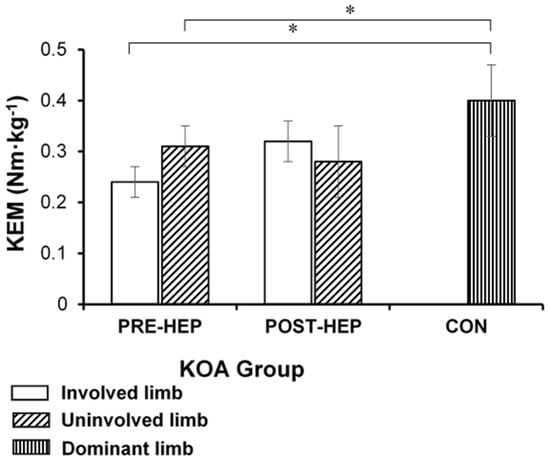
Figure 1
Open AccessReview
The Involvement and Manifestations of SARS-CoV-2 Virus in Cardiovascular Pathology
by
Sofia Teodora Hărșan and Anca Ileana Sin
Medicina 2025, 61(5), 773; https://doi.org/10.3390/medicina61050773 - 22 Apr 2025
Abstract
Although the acute phase of the COVID-19 pandemic has subsided, the emergence of the post-COVID-19 condition presents a new and complex public health challenge, characterized by persistent, multisystem symptoms that can endure for weeks or months after the initial infection with the SARS-CoV-2
[...] Read more.
Although the acute phase of the COVID-19 pandemic has subsided, the emergence of the post-COVID-19 condition presents a new and complex public health challenge, characterized by persistent, multisystem symptoms that can endure for weeks or months after the initial infection with the SARS-CoV-2 virus, significantly affecting survivors’ quality of life. Among the most concerning sequelae are cardiovascular complications, which encompass a broad spectrum of conditions, including arrhythmias, myocardial damage, or postural orthostatic tachycardia syndrome. This narrative review explores the burden of the SARS-CoV-2 infection on cardiovascular health by reviewing the latest and most relevant findings in the literature and highlighting different aspects of COVID-19’s cardiovascular involvement. This review investigates the pathophysiological mechanisms underlying cardiovascular involvement in the post-COVID-19 condition, with a focus on direct viral invasion via ACE2 receptors, immune-mediated cardiovascular injury, cytokine storm, systemic inflammation, endothelial dysfunction, and mitochondrial injury. The interplay between pre-existing cardiovascular diseases, such as hypertension, atherosclerosis, diabetes, and atrial fibrillation, and COVID-19 is also explored, revealing that individuals with such conditions are at heightened risk for both severe acute illness and long-term complications. Long-term immune activation and the persistence of viral antigens are increasingly recognized as contributors to ongoing cardiovascular damage, even in individuals with mild or asymptomatic initial infections. As the healthcare system continues to adapt to the long-term consequences of the SARS-CoV-2 pandemic, a deeper understanding of these cardiovascular manifestations is essential. This knowledge will inform the development of targeted strategies for prevention, clinical management, and rehabilitation of affected patients. Furthermore, the insights gained from the intersection of COVID-19 and cardiovascular health will be instrumental in shaping responses to future viral epidemics, highlighting the necessity for multidisciplinary approaches to patient care and public health preparedness.
Full article
(This article belongs to the Section Epidemiology & Public Health)
►▼
Show Figures

Figure 1
Open AccessReview
Rho-Kinase Inhibitors in the Management of Fuchs Endothelial Corneal Dystrophy: A Review
by
Anđela Jukić, Ana Pupić Bakrač, Biljana Đapic Ivančić, Andrijana Kopić, Ana Meter, Rajka Kasalica Žužul, Josip Pavan and Tomislav Jukić
Medicina 2025, 61(5), 772; https://doi.org/10.3390/medicina61050772 - 22 Apr 2025
Abstract
Fuchs endothelial corneal dystrophy (FECD) is the most common corneal endothelial dystrophy. It is characterized by the progressive loss of corneal endothelial cells (CECs), guttae formation on the Descemet membrane, and corneal edema, leading to visual impairment. Corneal transplantation remains the standard treatment,
[...] Read more.
Fuchs endothelial corneal dystrophy (FECD) is the most common corneal endothelial dystrophy. It is characterized by the progressive loss of corneal endothelial cells (CECs), guttae formation on the Descemet membrane, and corneal edema, leading to visual impairment. Corneal transplantation remains the standard treatment, but it has limitations such as donor shortages, infection risk, and graft rejection. Rho-kinase (ROCK) inhibitors have emerged as a promising pharmacological alternative. These agents promote CEC proliferation, migration, and adhesion while inhibiting apoptosis and enhancing corneal endothelial wound healing. Several studies have demonstrated the efficacy of ROCK inhibitors in improving corneal clarity and endothelial function, particularly when used as an adjunct to Descemet Stripping Only (DSO) surgery. Additionally, they show potential in preventing corneal edema in FECD patients undergoing cataract surgery. The methodology involved a literature search through the PubMed and Medline databases using relevant keywords. Only peer-reviewed articles in English were included, with additional references from selected articles reviewed to ensure comprehensive coverage. ROCK inhibitors offer a novel pharmacological approach to managing FECD. They have shown potential in promoting endothelial cell regeneration and improving corneal functIion. Despite promising results, further research is required to determine ROCK inhibitors’ long-term safety, optimal dosing, and efficacy in surgical and non-surgical FECD patients. Their potential to delay or prevent corneal transplantation represents a significant advancement in FECD management.
Full article
(This article belongs to the Special Issue Advances in Corneal Management)
►▼
Show Figures

Figure 1

Journal Menu
► ▼ Journal Menu-
- Medicina Home
- Aims & Scope
- Editorial Board
- Reviewer Board
- Topical Advisory Panel
- Instructions for Authors
- Special Issues
- Topics
- Sections & Collections
- Article Processing Charge
- Indexing & Archiving
- Editor’s Choice Articles
- Most Cited & Viewed
- Journal Statistics
- Journal History
- Journal Awards
- Society Collaborations
- Conferences
- Editorial Office
Journal Browser
► ▼ Journal BrowserHighly Accessed Articles
Latest Books
E-Mail Alert
News
Topics
Topic in
JCM, JPM, Medicina, Osteology, Surgeries
Orthopaedic Diseases and Innovative Intervention Strategies, 2nd Volume
Topic Editors: Umile Giuseppe Longo, Vicenzo DenaroDeadline: 31 May 2025
Topic in
Cancers, Healthcare, JCM, JPM, Medicina
Public Health and Healthcare in the Context of Big Data
Topic Editors: Mingzhe Ma, Xi Yang, Ruogu QiDeadline: 5 July 2025
Topic in
Cancers, Current Oncology, JCM, Medicina, Onco
Cancer Biology and Radiation Therapy: 2nd Edition
Topic Editors: Chang Ming Charlie Ma, Ka Yu Tse, Ming-Yii Huang, Mukund SeshadriDeadline: 16 October 2025
Topic in
Clinics and Practice, Cosmetics, JCM, Medicina, Dermato, LabMed, Psychology International
Advances in Psychodermatology
Topic Editors: Jacek C Szepietowski, Andrzej JaworekDeadline: 30 November 2025

Conferences
Special Issues
Special Issue in
Medicina
Advances in Clinical Medicine and Dentistry
Guest Editors: Radu Iliescu, Ionut Luchian, Mihaela MoscaluDeadline: 30 April 2025
Special Issue in
Medicina
Development of Cancer Surgery: Innovations in Gastrointestinal, Endocrine, and HPB Cancer Treatment
Guest Editors: Justas Žilinskas, Tadas Latkauskas, Saulius ŠvagždysDeadline: 30 April 2025
Special Issue in
Medicina
Advances in the Diagnosis and Treatment of Coronary Artery and Peripheral Artery Diseases
Guest Editors: Ovidiu Mitu, Alexandru Dan CostacheDeadline: 30 April 2025
Special Issue in
Medicina
Novel Innovations in Diabetes Mellitus Prevention, Screening and Management
Guest Editors: Anca Pantea Stoian, Teodor Salmen, Mihaela Adela IancuDeadline: 30 April 2025
Topical Collections
Topical Collection in
Medicina
New Concepts for Dental Treatments and Evaluations
Collection Editors: Cosmin Sinescu, Virgil-Florin Duma
Topical Collection in
Medicina
Advances in Cornea, Cataract, and Refractive Surgery
Collection Editor: Ivo Guber
Topical Collection in
Medicina
Pain, Bleeding, Trauma and Infections: The 4 Horsemen of the Apocalypse for the Emergency Medicine
Collection Editor: Marcello Candelli
Topical Collection in
Medicina
Frontiers in Breast Cancer Diagnosis and Treatment
Collection Editors: Jimmy T. Efird, Tithi Biswas









